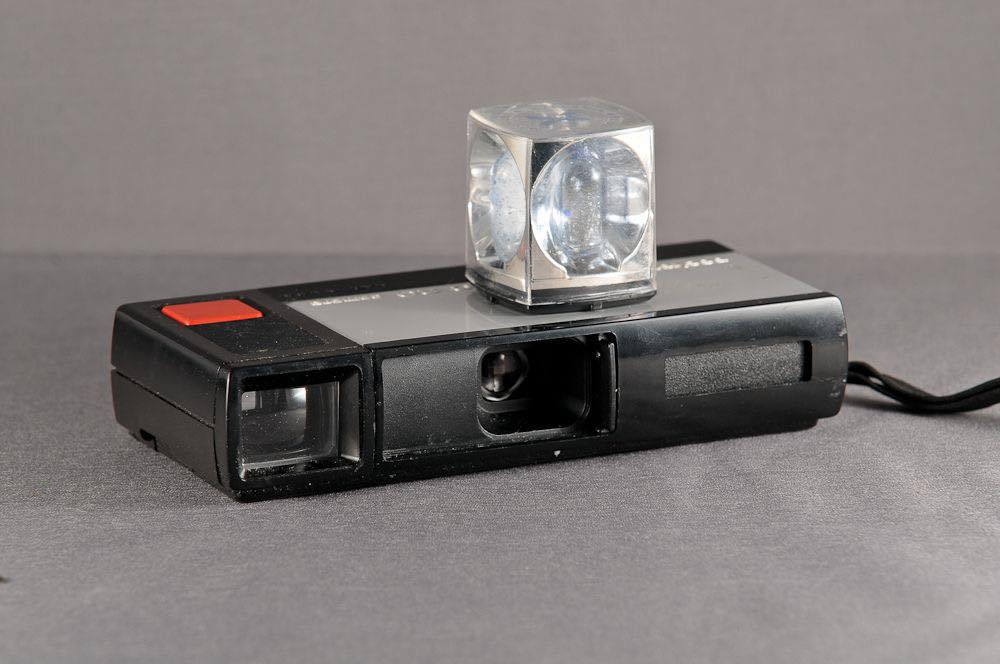The Kodak Instamatic is more than just a camera; it’s a symbol of a photographic revolution. Launched in 1963, it introduced millions to affordable, easy-to-use cameras and set the stage for a new era of casual photography. This camera series made photography more accessible to everyday people, changing the way we capture moments. Let’s dive into the fascinating history and impact of the Kodak Instamatic, a game-changer in the world of photography.

The Origin of the Kodak Instamatic
In the early 1960s, Kodak set out to create a simple, affordable camera that anyone could use. The result was the Instamatic series, designed primarily by Dean M. Peterson and based on an original concept by Alexander Gow. What set the Instamatic apart was its use of Kodak’s innovative 126 film cartridge, which made loading film a breeze. Gone were the days of fumbling with film rolls—now, you simply dropped in the cartridge, closed the back, and you were ready to shoot.
The first model, the Instamatic 50, debuted in the UK in February 1963, followed by the Instamatic 100 in the U.S. a month later. These cameras were designed to be straightforward, with non-adjustable aperture, focus, and shutter speeds. Priced at around $16, the Instamatic quickly gained popularity, becoming a staple in households across America.
A New Era of Easy-Load Film
The 126 film format was the secret weapon behind the Instamatic’s success. Kodak’s new cartridge system simplified the loading process, removing the need for spooling film manually. Each cartridge contained the film backing plate and exposure counter, reducing the complexity of camera manufacturing and keeping costs low.
The design of the cartridge not only made it user-friendly but also ensured that film alignment was perfect every time. This innovation contributed to the mass appeal of the Instamatic, turning photography into a fun, hassle-free hobby. Kodak sold both print and slide film in 126 format, allowing users to choose between color prints and vibrant slides.
Iconic Instamatic Models and Their Features
The Instamatic lineup quickly expanded, introducing models that catered to different needs:
- Instamatic 100: The first U.S. model, with a built-in flash for single-use AG-1 bulbs. It was simple, yet effective, and became the face of the Instamatic series.
- Instamatic 300 and 400: These models featured added enhancements, such as a light meter and spring-driven film advance.
- Instamatic 700: This model offered adjustable focus and shutter speeds, making it more versatile for photographers who wanted a bit more control.
- Instamatic 814: With a four-element lens and coupled rangefinder, it was one of the most advanced Instamatics made in the U.S.
- Instamatic Reflex: The pinnacle of the series, it was a single-lens reflex camera made in Germany, compatible with Retina S-mount lenses for professional-grade photography.
The diversity of the Instamatic models allowed Kodak to cater to a wide range of consumers, from casual photographers to hobbyists looking for more sophisticated features.

The Pocket Instamatic and 110 Format
In 1972, Kodak introduced the Pocket Instamatic, which used the newly developed 110 film format. These cameras were compact and portable, living up to their “Pocket” name. The 110 film cartridges maintained the same easy-load concept but were much smaller, making the cameras highly portable.
The Pocket Instamatic series had several models:
- Pocket Instamatic 20: An entry-level camera with basic functionality.
- Pocket Instamatic 30: Offered a simple lens and auto-exposure system.
- Pocket Instamatic 60: The top-of-the-line model with a stainless steel body, rangefinder, and automatic exposure.
The Pocket Instamatic quickly became popular, with over 25 million units sold within three years. However, the 110 format’s small negative size limited print quality, which led to smaller photo sizes being the norm.

The Instamatic’s Commercial Success and Cultural Impact
The Instamatic series was not just a success—it was a phenomenon. More than 50 million Instamatic cameras were sold between 1963 and 1970 alone. Kodak even ran a promotion with Scott paper towels in the 1970s, giving away Instamatic cameras to generate demand for its films. The promotion worked wonders, solidifying Kodak’s presence in the film and photography market.
As the Instamatic became a household name, it inspired competitors to produce similar cameras. Brands like Canon, Olympus, Minolta, and Zeiss Ikon released their versions of 126 and 110 format cameras. Some were more advanced and expensive, but none matched the mass appeal of the Instamatic.
The Legacy of Instamatic in Modern Photography
The impact of the Instamatic is still felt today. It helped democratize photography, allowing people from all walks of life to document their memories without needing professional skills. The camera’s simplicity, affordability, and reliability made it a beloved item across generations.
The influence of the Instamatic extended beyond its physical form. In the digital age, photography apps like Hipstamatic and Instagram drew inspiration from the camera’s aesthetic, aiming to replicate its retro, square-format style. The “Instamatic look” became a trend, with digital filters mimicking the vintage feel of Instamatic snapshots.

Conclusion: Instamatic’s Lasting Mark on Photography
The Kodak Instamatic was more than just a camera—it was a cultural icon. It opened the doors to casual, everyday photography, allowing millions to capture memories with ease. From the innovative 126 film cartridge to the compact Pocket Instamatics, this series revolutionized the way we think about photography.
The Instamatic’s simple design, ease of use, and affordability set a standard that shaped the future of point-and-shoot cameras. Its influence lives on in the retro photography trends of today, reminding us that sometimes, the best innovations are the simplest.